- Exploring Bhutan’s Culture in Thimphu
- Discovering Paro Cultural Sites
- Immersion in Punakha Cultural Attractions
- Bumthang Valley Cultural Tours
- Exploring the Serene Haa Valley
- Phobjikha Valley: Culture and Conservation
- Festival Tours in Bhutan
- Uncovering the Traditions of Eastern Bhutan
- Best Time For Cultural Tours In Bhutan
- Dos and Don'ts While Travelling to 8 Best Cultural Tours In Bhutan
- FAQs OF The 8 Best Cultural Tours in Bhutan
Bhutan, a land of breathtaking landscapes and deep-rooted traditions, offers travelers an unparalleled cultural experience. From vibrant Bhutan festival tours to serene monastery tours in Bhutan, this Himalayan kingdom is a treasure trove of history, spirituality, and living heritage. Cultural tours in Bhutan provide a unique opportunity to discover historic sites, explore ancient monasteries, and participate in traditional experiences in Bhutan that reflect its rich customs and values. With highlights such as the Bumthang Valley cultural tours, Punakha cultural attractions, and Paro cultural sites, Bhutan is the ultimate destination for those seeking best cultural experiences in Bhutan. Whether visiting during a colorful festival or exploring sacred sites, these Bhutan heritage tours offer an immersive glimpse into the kingdom’s traditions and values.
At Druk Holidays, we take pride in being the leading provider of Cultural Tours in Bhutan, offering carefully curated experiences that showcase the kingdom's rich traditions and vibrant heritage. With a deep understanding of Bhutan’s culture, we design tours that bring you closer to the best cultural experiences in Bhutan, including visits to historical sites in Bhutan, participation in Bhutan festival tours, and opportunities to explore traditional experiences in Bhutan. Whether it’s the serene beauty of the Bumthang Valley cultural tours, the grandeur of Punakha cultural attractions, or the charm of Paro cultural sites, our expertise ensures a seamless and enriching journey. For an unforgettable adventure steeped in history and spirituality, trust Druk Holidays to provide the most comprehensive Bhutan Cultural Travel Guide.
Exploring Bhutan’s Culture in Thimphu
Thimphu, Bhutan's vibrant capital, is a hub for cultural tours in Bhutan, offering a perfect mix of tradition and modernity. As one of the top Bhutan cultural attractions, this city is rich in history, spirituality, and Bhutanese heritage, making it a must-visit for those seeking best cultural experiences in Bhutan. From stunning architecture to fascinating museums, Thimphu provides insights into the nation’s traditions while embracing its evolving identity.
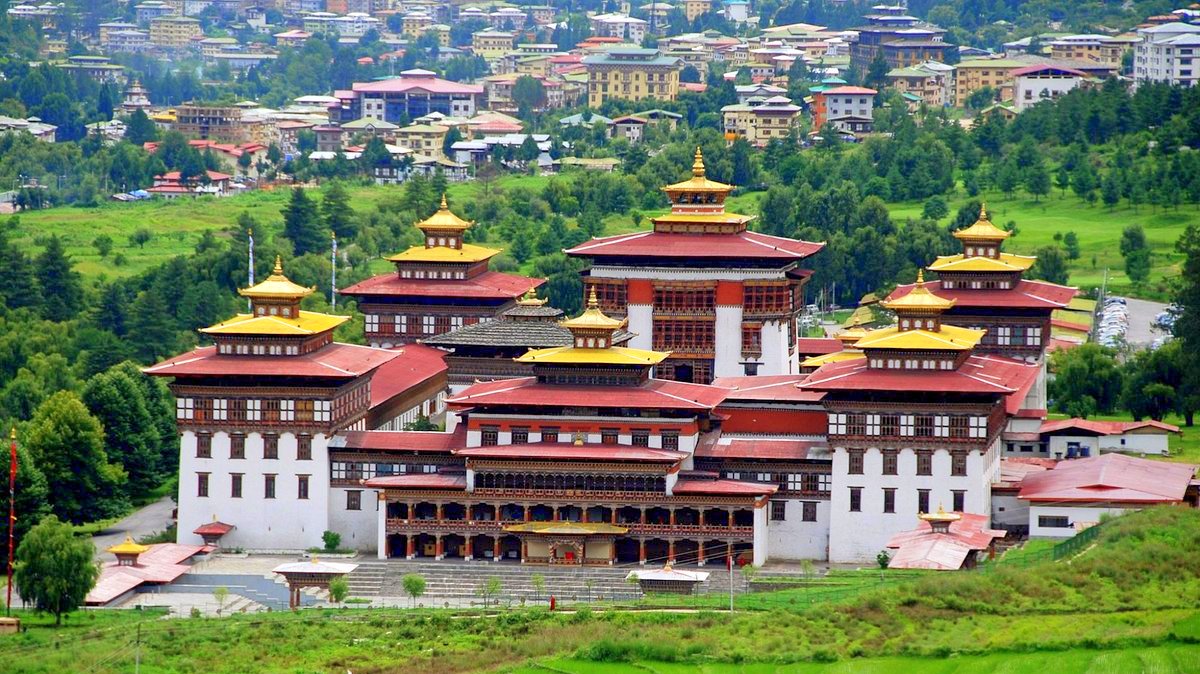
- Tashichho Dzong: A stunning fortress that serves as the seat of Bhutan’s government and monastic body, symbolizing Bhutan’s spiritual and political harmony.
- Buddha Dordenma Statue: A magnificent 51-meter-tall statue overlooking Thimphu, embodying Bhutan's commitment to Buddhism and offering panoramic views of the valley.
- National Folk Heritage Museum: A perfect place to experience traditional experiences in Bhutan, showcasing rural Bhutanese lifestyle and customs.
- Changangkha Lhakhang: A centuries-old monastery both a spiritual sanctuary and an important pilgrimage site for locals.
- Weekend Market: Dive into Bhutanese culture by exploring stalls filled with traditional handicrafts, local produce, and unique souvenirs.
- Simply Bhutan Museum: An interactive museum that provides a deeper understanding of Bhutanese traditions, architecture, and daily life.
- Zorig Chusum (Institute of Traditional Arts): Witness students learning Bhutan’s 13 traditional arts, preserving Bhutanese culture for future generations.
- Takin Reserve: A visit to this wildlife reserve offers an opportunity to see Bhutan’s national animal, the Takin, and learn about its mythical origins.
Exploring Thimphu is an essential part of any Bhutan Cultural Travel Guide, offering unique insights into the nation’s past and present. From majestic landmarks like the Tashichho Dzong to immersive experiences at museums and markets, Thimphu beautifully encapsulates the essence of Bhutan heritage tours. Whether you are captivated by historic sites or drawn to vibrant traditions, the cultural richness of Thimphu promises unforgettable memories for every traveler.
Discovering Paro Cultural Sites
Paro, one of Bhutan's most picturesque valleys, offers a rich tapestry of cultural experiences in Bhutan that blend history, spirituality, and natural beauty. As a key destination for Bhutan heritage tours, Paro is home to several iconic Bhutan cultural sites that provide an in-depth exploration of Bhutanese traditions and religious practices. Whether you are hiking up to the legendary Tiger's Nest Monastery or visiting sacred temples, Paro promises a truly enriching experience for anyone seeking to delve deeper into Bhutan's vibrant cultural legacy.
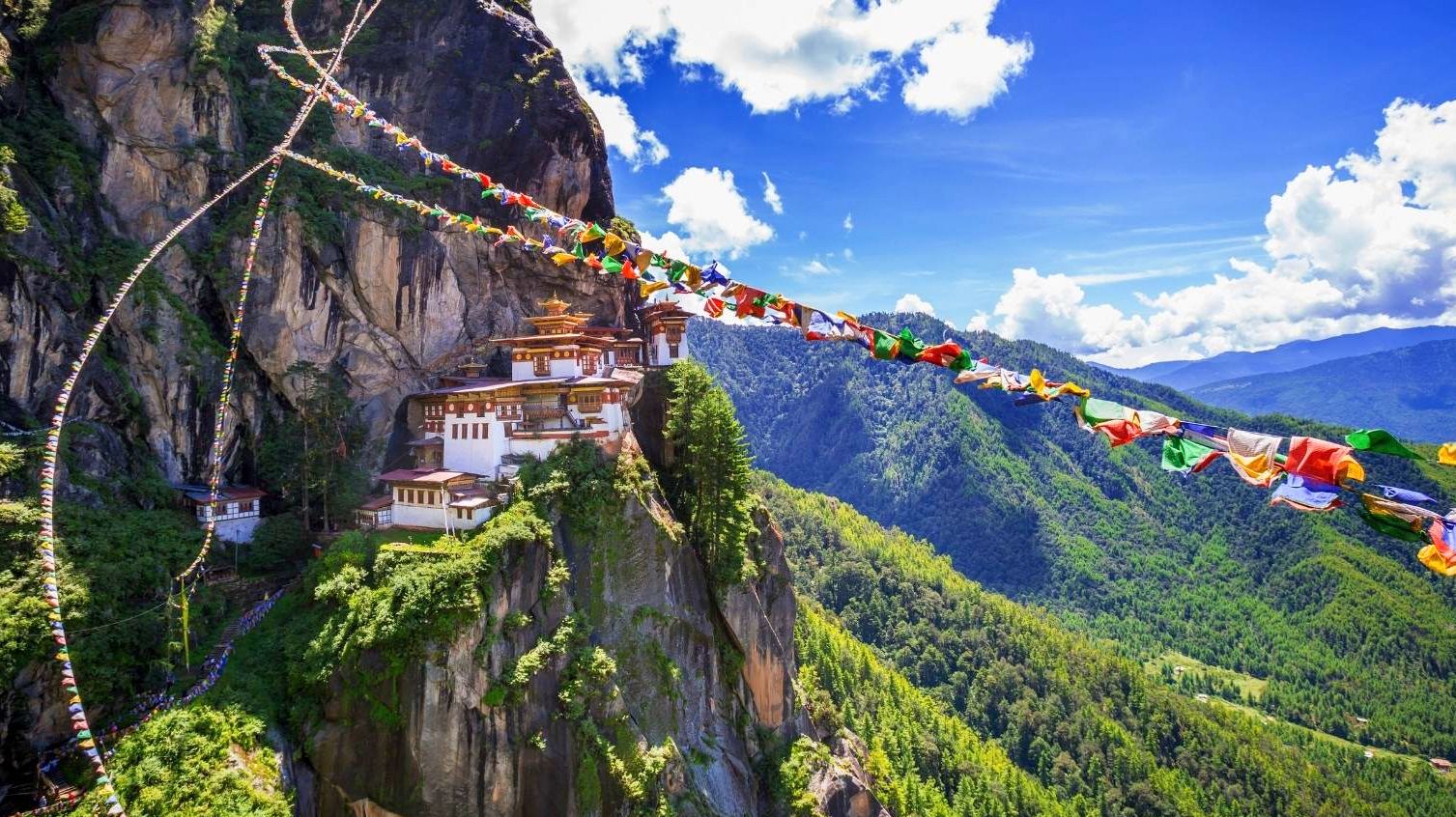
- Tiger's Nest Monastery (Paro Taktsang): Bhutan's most iconic site, perched on a cliffside, this sacred monastery is one of the most revered Buddhist landmarks in the world.
- Kyichu Lhakhang: One of Bhutan's oldest and most significant temples, believed to have been built in the 7th century, marking Bhutan’s early introduction to Buddhism.
- Paro Dzong: Also known as Rinpung Dzong, this fortress monastery is a masterpiece of Bhutanese architecture, showcasing the country’s rich cultural and spiritual heritage.
- National Museum of Bhutan: Housed in the former Paro Dzong, the museum offers a fascinating collection of Bhutanese art, history, and cultural artifacts.
- Drukgyel Dzong: Though in ruins, this historic fort once played a vital role in defending Bhutan from invasions and offers breathtaking views of the Paro Valley.
- Ugyen Pelri Palace: A beautiful example of traditional Bhutanese architecture, this palace reflects the royal family's deep connection to Bhutan's culture and history.
- Chele La Pass: Offering sweeping views of the Paro Valley, this high-altitude pass is a spiritual and scenic journey, where visitors can stop by sacred stupas and temples.
- Paro Weekend Market: A lively market where locals and tourists alike can find traditional Bhutanese textiles, handcrafts, and other cultural products.
Paro cultural sites are among the most important and visually striking in Bhutan, providing visitors with a window into the country's spiritual and historical heart. From the revered Tiger's Nest Monastery to the tranquil beauty of Kyichu Lhakhang, Paro is a must-visit destination for anyone seeking to immerse themselves in the depth of Bhutan’s heritage. As part of your Bhutan Cultural Travel Guide, Paro offers an unforgettable exploration of historic sites in Bhutan, making it an essential stop on any cultural tour of the kingdom.
Immersion in Punakha Cultural Attractions
Punakha, the former capital of Bhutan, is renowned for its stunning cultural attractions in Bhutan, offering visitors a unique blend of history, spirituality, and natural beauty. Nestled between the Mo Chhu and Pho Chhu rivers, Punakha is home to some of the most significant and picturesque historic sites in Bhutan. From the majestic Punakha Dzong to serene temples and vibrant local traditions, Punakha provides an unparalleled opportunity for cultural immersion. It is an essential destination for those seeking traditional experiences in Bhutan and exploring the deep spiritual roots of the kingdom.
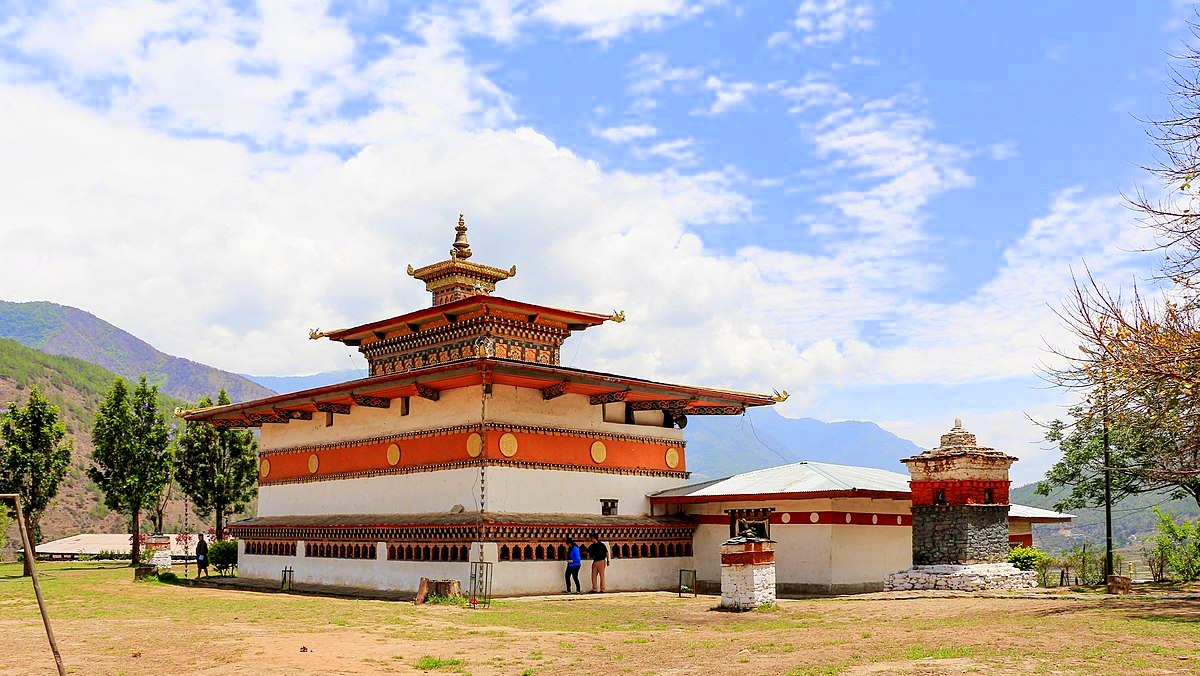
- Punakha Dzong: One of Bhutan’s most iconic landmarks, this fortress-monastery is a masterpiece of traditional Bhutanese architecture, serving as the administrative and religious hub of the region.
- Chimi Lhakhang: Known as the "Fertility Temple," this temple is dedicated to Lama Drukpa Kunley, a revered saint, and attracts pilgrims seeking blessings for children.
- Khamsum Yulley Namgyal Chorten: A serene and beautiful chorten perched on a hilltop, offering panoramic views of the surrounding landscape and the Punakha Valley.
- Punatshang Chhu River: The river that runs through Punakha provides a scenic backdrop to the Punakha Dzong and is an excellent spot for cultural exploration and photography.
- Zangtopelri Lhakhang: A sacred temple built in honor of Guru Rinpoche, this peaceful site is known for its spiritual significance and scenic surroundings.
- Punakha Valley Rice Fields: Known for its fertile lands, the Punakha Valley is famous for its lush rice fields, where visitors can learn about traditional Bhutanese farming methods.
- Jomolhari Mountain Views: The towering Mount Jomolhari offers a glimpse into the sacred natural world, regarded as the abode of Bhutanese deities.
- Punakha Tshechu: A vibrant and colorful annual festival held in the Punakha Dzong, where visitors can witness traditional Bhutanese dances, mask dances, and rituals that celebrate Bhutan’s cultural heritage.
Punakha is a cultural haven that beautifully combines Bhutan heritage tours with spiritual experiences and natural beauty. With its remarkable Punakha Dzong, Chimi Lhakhang, and scenic views of the valley, this region is a must-visit for anyone seeking a deeper understanding of Bhutan's rich culture and history. Whether participating in a Bhutan festival tour or simply exploring its traditional experiences in Bhutan, Punakha offers an unforgettable journey into the heart of the kingdom’s heritage.
Bumthang Valley Cultural Tours
Bumthang Valley, often referred to as the spiritual heart of Bhutan, is an extraordinary destination for cultural tours in Bhutan. This beautiful valley is home to a wealth of sacred sites, ancient monasteries, and vibrant traditions that reflect the deep spiritual roots of the country. Known for its serene landscapes and rich history, Bumthang Valley cultural tours offer visitors an immersive experience in Bhutan’s heritage tours while exploring its most revered spiritual landmarks. Whether visiting sacred temples, participating in colorful festivals, or discovering hidden treasures, Bumthang Valley is an essential destination for anyone looking to experience the best cultural experiences in Bhutan.
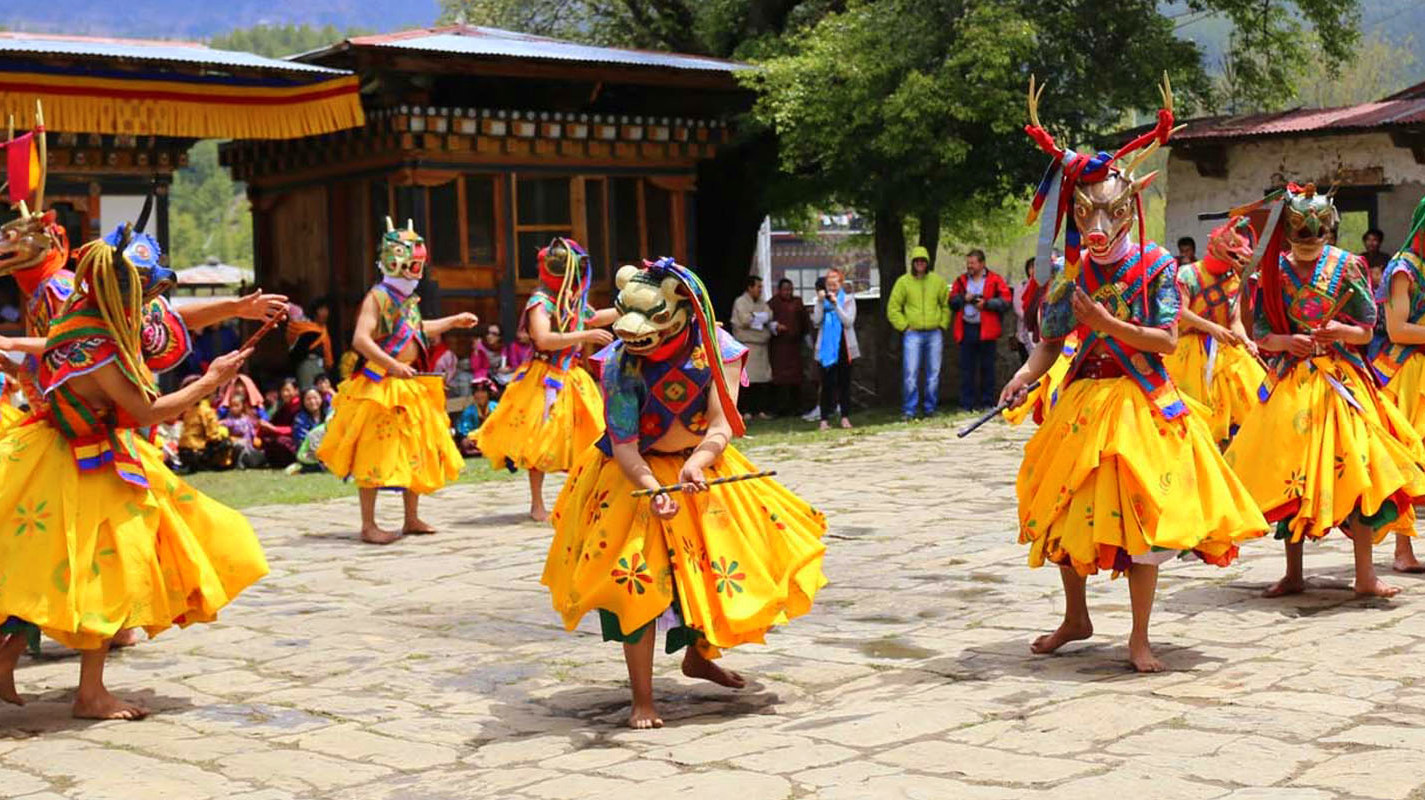
- Jambay Lhakhang: One of Bhutan’s oldest temples, dating back to the 7th century, this sacred site is known for its historical significance and stunning architecture.
- Kurjey Lhakhang: A must-see monastery that houses the sacred body imprint of Guru Rinpoche, who introduced Buddhism to Bhutan. It is one of the most revered spiritual sites in Bhutan.
- Tamshing Lhakhang: Famous for its rich history and beautiful murals, this monastery was founded by the great Buddhist saint Pema Lingpa.
- Bumthang Tshechu: A vibrant festival held annually at the Jambay Lhakhang, where visitors can experience traditional dances, rituals, and Bhutanese cultural celebrations.
- Mebar Tsho (Burning Lake): A sacred and spiritual site, this lake is associated with the famous Buddhist saint Pema Lingpa, who is said to have discovered treasures here.
- Chimi Lhakhang (Bumthang Branch): A peaceful temple in the valley, offering visitors a glimpse of Bhutan’s rich religious culture and local beliefs.
- Ura Valley: A scenic and remote valley known for its traditional architecture, where visitors can explore Bhutanese culture and customs in their purest form.
- Bumthang’s Apple Orchards: The valley is also famous for its apple orchards, which produce some of Bhutan’s best apples, allowing visitors to enjoy local food and cultural practices.
Bumthang Valley cultural tours provide an unmatched opportunity to explore the spiritual and cultural heart of Bhutan. From the ancient Kurjey Lhakhang to the vibrant festivities of the Bumthang Tshechu, the valley is home to numerous sacred sites and traditions that have shaped Bhutan's identity. A journey through Bumthang offers not only a deeper understanding of Bhutan’s rich heritage but also a unique chance to experience the kingdom's spiritual landscape and timeless customs. As part of any Bhutan heritage tour, Bumthang Valley stands as a must-visit destination for those seeking to experience traditional experiences in Bhutan.
Exploring the Serene Haa Valley
The Haa Valley, one of Bhutan’s most tranquil and lesser-visited regions, offers an idyllic escape for travelers seeking authentic cultural experiences in Bhutan. Nestled between towering mountains, this serene valley is rich in both natural beauty and historical significance. Known for its peaceful ambiance and traditional Bhutanese lifestyle, the Haa Valley cultural tours provide an immersive experience into the heart of Bhutanese culture. Exploring the valley’s sacred temples, traditional villages, and scenic landscapes allows visitors to connect deeply with Bhutan's spiritual and cultural heritage.
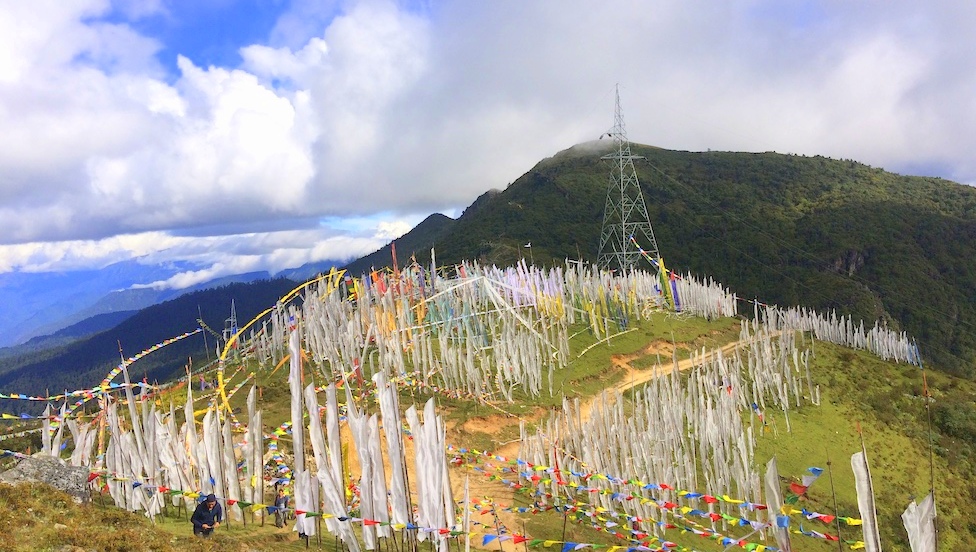
- Haa Dzong: A historical fortress-monastery that stands as a symbol of Bhutan’s architectural grandeur and its deep-rooted spiritual traditions.
- Lhakhang Karpo: A sacred white temple dedicated to the valley’s patron deity, this site offers visitors a glimpse into the religious practices of the region.
- Lhakhang Nagpo: Known as the “Black Temple,” this temple stands on the opposite side of the valley from Lhakhang Karpo and is deeply revered by locals.
- Haa Valley’s Traditional Villages: Visitors can explore the charming villages of Haa Valley, where they can witness Bhutanese rural life and traditional farming methods.
- Haa Festival: A vibrant annual celebration that showcases Bhutanese dance, music, and rituals, providing a unique insight into Bhutan’s rich cultural heritage.
- Chelela Pass: Offering breathtaking views of the Haa Valley and the surrounding Himalayan peaks, this pass also features Buddhist shrines and prayer flags.
- Shemgang Temple: A sacred temple in Haa, where visitors can learn about the spiritual practices and ancient Buddhist traditions of the region.
- Bhutanese Handicrafts: Haa Valley is known for its exquisite local handicrafts, including woolen textiles and handmade wooden items, which offer a glimpse into Bhutan’s traditional craftsmanship.
Exploring Haa Valley offers a peaceful journey into Bhutan's cultural heart, where visitors can experience traditional experiences in Bhutan that are still preserved by its remote communities. From the revered Haa Dzong to the sacred temples like Lhakhang Karpo, this valley is a rich repository of Bhutan cultural attractions. Haa Valley offers an off-the-beaten-path experience, making it an essential part of any Bhutan heritage tour and providing travelers with a serene escape into Bhutan’s deep cultural and spiritual roots.
Phobjikha Valley: Culture and Conservation
Phobjikha Valley, located in central Bhutan, is a unique blend of cultural richness and environmental preservation. Known for its scenic beauty and significance as a conservation area, this valley offers an extraordinary opportunity for travelers to explore Bhutan's cultural attractions while supporting efforts to protect its wildlife. The valley is particularly famous for being the winter home of the endangered black-necked cranes, making it an important site for Bhutan conservation tours. At the same time, its traditional Bhutanese villages, sacred temples, and serene landscapes provide an authentic experience of traditional experiences in Bhutan and the kingdom's enduring cultural heritage.

- Gangtey Monastery: An iconic monastery situated on a hilltop, this spiritual center offers panoramic views of Phobjikha Valley and is deeply significant to Bhutanese culture and Buddhism.
- Black-Necked Crane Centre: A key site for wildlife conservation, this center provides visitors with a chance to learn about the endangered black-necked cranes and the efforts to protect them.
- Phobjikha Valley Villages: Explore the traditional villages where you can interact with local people and experience the everyday life of Bhutanese rural communities.
- Gangtey Tsechu Festival: A vibrant annual festival celebrated at Gangtey Monastery, where locals and visitors gather to witness Bhutanese dances, music, and religious rituals.
- Crane Watching: The valley is famous for being the winter home of the black-necked cranes. Birdwatching tours provide an opportunity to see these majestic birds in their natural habitat.
- Sacred Sites and Temples: Phobjikha Valley is home to several sacred temples and monuments, including Khopakha Temple, where visitors can gain insights into Bhutanese religious traditions.
- Hiking Trails: The valley offers picturesque hiking trails, allowing visitors to explore the natural beauty of Bhutan, from dense forests to tranquil rivers.
- Traditional Bhutanese Handicrafts: Phobjikha Valley is home to local artisans who create intricate Bhutanese crafts, including woven textiles and wooden carvings, that reflect the cultural heritage of the region.
Phobjikha Valley is a perfect destination for those seeking to blend cultural exploration with environmental conservation. The valley’s stunning landscapes, including Gangtey Monastery, the Black-Necked Crane Centre, and its surrounding villages, offer visitors a chance to connect with both Bhutan’s cultural heritage and its dedication to preserving nature. With its rich traditions, spectacular wildlife, and commitment to conservation, Phobjikha Valley stands as one of Bhutan’s most unique and fulfilling cultural and ecological experiences. Whether you are interested in Bhutan spiritual tours, nature conservation, or Bhutan heritage tours, Phobjikha Valley provides an immersive experience that will leave a lasting impression.
Festival Tours in Bhutan
Bhutan is a country steeped in tradition, where festivals are not just events but essential expressions of its culture, spirituality, and identity. Festival tours in Bhutan provide visitors with an extraordinary opportunity to witness and participate in some of the most vibrant, colorful, and spiritually enriching celebrations in the world. These festivals, held throughout the year at monasteries and dzongs across the kingdom, are a magnificent blend of traditional experiences in Bhutan, sacred rituals, and local customs. Whether it’s the mesmerizing mask dances, the sacred rituals, or the joyous community gatherings, Bhutan festival tours offer an in-depth look into the country’s deep-rooted culture and spiritual life.
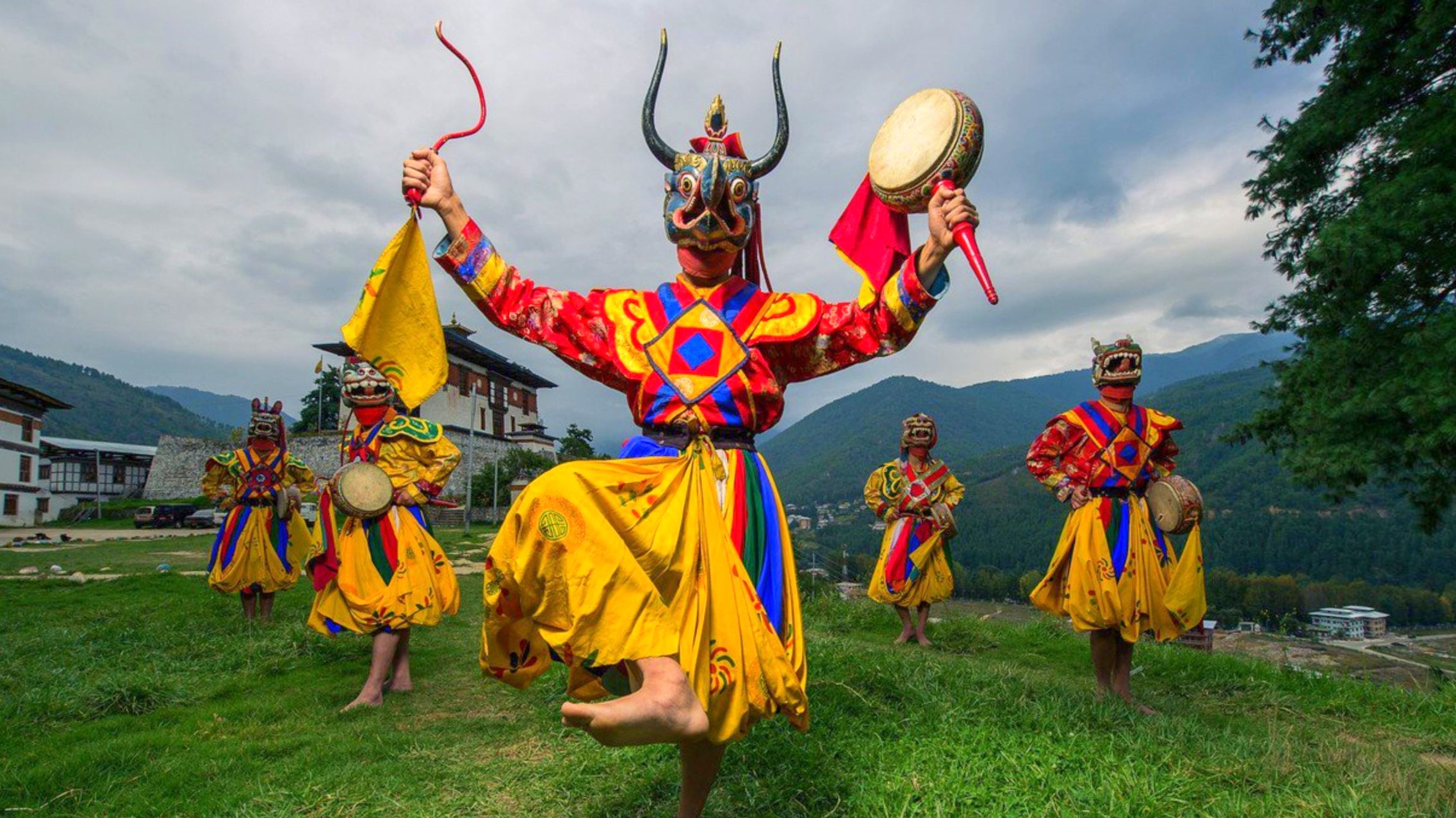
- Paro Tshechu: One of Bhutan’s most famous festivals, held annually in the Paro Dzong, it features elaborate mask dances, sacred rituals, and vibrant performances that attract both locals and tourists alike.
- Thimphu Tshechu: Held in the capital city, this festival is a lively celebration of Bhutanese culture, where visitors can witness traditional dances, vibrant costumes, and the display of religious relics.
- Punakha Tshechu: Held at the Punakha Dzong, this festival celebrates Bhutanese culture with colorful mask dances, sacred rituals, and community feasts, reflecting the spiritual importance of the dzong.
- Bumthang Tshechu: A smaller yet equally captivating festival, the Bumthang Tshechu features traditional dances and rituals at the sacred Jambay Lhakhang, giving visitors a more intimate experience.
- Haa Summer Festival: Celebrating the culture, traditions, and lifestyle of the people in the Haa Valley, this festival showcases local music, dances, and Bhutanese cuisine, offering visitors a taste of rural Bhutanese life.
- Wangdue Phodrang Tshechu: Known for its cultural significance and vibrant performances, this festival attracts visitors eager to experience Bhutanese dance and religious ceremonies.
- Jambay Lhakhang Drup: This unique festival is famous for the fire ritual and the sacred dances, with visitors participating in a traditional Bhutanese experience in the Bumthang region.
- Rinpung Dzong Festival: Celebrated at the Rinpung Dzong in Paro, this festival is an immersive experience where visitors can enjoy Bhutanese religious dances, vibrant costumes, and spiritual offerings.
Festival tours in Bhutan offer an exceptional opportunity to experience the country’s cultural and spiritual vibrancy. From the Paro Tshechu to the Haa Summer Festival, Bhutan’s festivals are a vivid portrayal of its religious devotion, traditional practices, and close-knit community life. Participating in these festivals allows visitors to engage with the essence of Bhutanese culture, while also gaining insight into the kingdom's rich history and spiritual traditions. Whether you're drawn to the mask dances, the sacred monastery tours in Bhutan, or the cultural celebrations, Bhutan festival tours are an unforgettable journey into the heart of Bhutan's vibrant traditions.
Uncovering the Traditions of Eastern Bhutan
Eastern Bhutan, often overlooked by tourists, is a region rich in traditional experiences in Bhutan and offers an authentic glimpse into Bhutanese life, culture, and spirituality. Known for its remote and untouched beauty, the eastern part of the country remains a haven for those eager to explore Bhutan’s lesser-known cultural heritage. From the Bumthang Valley cultural tours to the hidden temples and monasteries, Eastern Bhutan is steeped in tradition and history. A Bhutan cultural travel guide to this region will take you on a journey through charming villages, ancient monasteries, and sacred sites, offering a profound understanding of Bhutanese customs and religious practices.
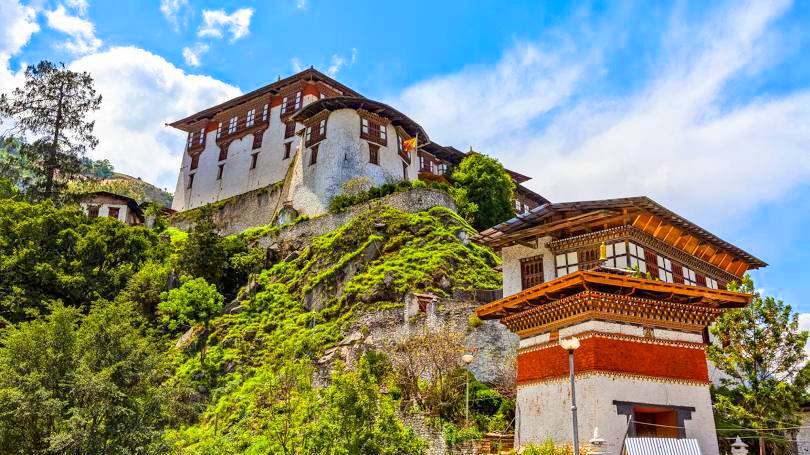
- Bumthang Valley: Known as the spiritual heart of Bhutan, this valley is home to ancient temples like Jambay Lhakhang and Kurjey Lhakhang, where visitors can immerse themselves in Bhutan’s deep-rooted spiritual and cultural traditions.
- Tribal Villages: Eastern Bhutan is home to indigenous communities, such as the Sharchops, known for their rich culture and traditional lifestyle. Exploring these villages offers an insight into Bhutanese rural life.
- Ngang Lhakhang: An important monastery in Bumthang, it is considered one of Bhutan’s sacred sites and is an essential part of the spiritual landscape of Eastern Bhutan.
- Mongar Dzong: This historical fortress is one of the top Bhutan cultural attractions in the eastern region. Built in 1953, it symbolizes Bhutan’s commitment to preserving its heritage and culture.
- Khenpai Goemba: A Buddhist monastery offering visitors an opportunity to engage with the spiritual practices of the region, known for its traditional Bhutan spiritual tours.
- Trashigang Dzong: A pivotal cultural site in Eastern Bhutan, the Trashigang Dzong stands as a symbol of power and heritage in the eastern region, offering a rich cultural experience for travelers.
- Lhuentse Dzong: Located in a remote area, this dzong is less visited but provides a chance to explore the unspoiled beauty and spiritual ambiance of the region.
- Traditional Handicrafts: Eastern Bhutan is renowned for its unique handicrafts, particularly woven textiles and intricate woodwork. These crafts reflect the deep cultural traditions of the region.
Uncovering the traditions of Eastern Bhutan offers a truly authentic experience for those looking to dive deep into Bhutan’s cultural and spiritual roots. With its sacred temples, historic sites in Bhutan, and vibrant local traditions, Eastern Bhutan provides a unique opportunity to explore the Bhutan heritage tours that are often missed by mainstream tourists. From the stunning Bumthang Valley to the lesser-known Mongar Dzong, Eastern Bhutan offers travelers a chance to witness Bhutanese culture in its purest form. For those interested in exploring Bhutan’s culture, this region presents an unforgettable journey through the heart of Bhutan's spiritual and cultural heritage.
Best Time For Cultural Tours In Bhutan
Choosing the right time for your cultural tours in Bhutan can significantly enhance your travel experience. Bhutan’s unique climate, diverse landscapes, and religious festivals all play a crucial role in shaping your journey. Whether you're exploring the top Bhutan cultural attractions, visiting sacred monastery tours in Bhutan, or attending one of the many traditional Bhutan festival tours, understanding the best time to visit will help you experience the richness of Bhutan’s culture at its finest.
- Spring (March to May): Spring is one of the most popular times to visit Bhutan, as the weather is mild, with clear skies and blooming flowers. This season is ideal for Bhutan cultural travel guides as it aligns with several important festivals like the Paro Tshechu and Thimphu Tshechu, where visitors can witness spectacular mask dances, traditional rituals, and vibrant Bhutanese celebrations.
- Autumn (September to November): Autumn is another excellent time to visit, with the weather being crisp and clear, offering fantastic views of the Himalayas and a perfect backdrop for your cultural explorations. The famous Punakha Tshechu and Bumthang Tshechu festivals take place in this season, providing travelers with a deep dive into Bhutanese traditions, spirituality, and local customs.
- Winter (December to February):If you prefer fewer crowds and the chance to explore Bhutan spiritual tours at a more relaxed pace, winter is a wonderful time to visit. Although it’s colder, the tranquil surroundings and crystal-clear skies create a serene atmosphere for visiting monastery tours in Bhutan and exploring remote cultural sites like Paro cultural sites and Punakha cultural attractions.
- Summer (June to August): While summer is considered the off-season due to heavy monsoon rains, it can still offer a unique opportunity to explore Bhutan's historic sites in Bhutan with fewer tourists. If you don’t mind the rain and are prepared for lush green landscapes and the refreshing atmosphere, summer can be a peaceful time to visit, especially if you’re focusing on cultural immersion in rural areas like Bumthang Valley cultural tours.
The best time for cultural tours in Bhutan largely depends on your preferences and the experiences you want to pursue. Spring and autumn are the peak seasons, perfect for experiencing Bhutan’s festival tours and enjoying clear skies for trekking and sightseeing. Winter offers a quieter, more contemplative experience, ideal for Bhutan spiritual tours and exploring sacred sites, while summer presents a chance to discover the lush, green beauty of Bhutan’s valleys. Regardless of when you choose to visit, Bhutan's rich culture, deeply rooted traditions, and sacred monastery tours in Bhutan will leave you with unforgettable memories.
Dos and Don'ts While Travelling to 8 Best Cultural Tours In Bhutan
Traveling to Bhutan to explore its vibrant culture, spiritual heritage, and historic sites is a unique and enriching experience. However, like any destination, it is essential to respect local customs and traditions to ensure a smooth and respectful journey. Whether you're on a Bhutan heritage tour, attending a Bhutan festival tour, or exploring monastery tours in Bhutan, understanding the dos and don’ts will help you make the most of your trip while showing respect for Bhutan’s culture.
Dos While Traveling to Bhutan
- Dress Modestly and Respectfully: When visiting sacred sites in Bhutan, such as monasteries, dzongs, and temples, always dress modestly. Women should cover their shoulders, arms, and legs, and men should avoid wearing shorts or sleeveless shirts. Modest attire shows respect for Bhutan spiritual tours and its religious traditions.
- Respect Local Customs and Traditions: Bhutanese culture is steeped in traditions that are deeply tied to Buddhism. Be mindful of traditional experiences in Bhutan like offering prayers at monasteries or when participating in religious ceremonies. Always show respect and remain silent during rituals and prayers.
- Ask for Permission Before Taking Photos: While Bhutan's landscapes are incredibly photogenic, always ask for permission before taking photographs of people, especially in cultural sites in Bhutan or during festivals. Some locals may prefer not to be photographed, particularly in religious settings.
- Use Both Hands When Giving or Receiving: In Bhutanese culture, it is customary to offer or receive items with both hands as a sign of respect, especially when interacting with elders or monks during your Bhutan heritage tours.
- Respect the Bhutanese Greeting: The traditional Bhutanese greeting is a "Kuzuzangpo la" (meaning “Hello”). Greet locals with this respectful phrase, and it’s always appreciated when you join in the Bhutanese tradition of bowing your head slightly while exchanging greetings.
- Participate in Festivals with Respect: Bhutan festival tours are incredible opportunities to witness the culture and spirituality of Bhutan. If you are attending a festival, observe the dances and rituals respectfully, without interrupting or engaging in disruptive behavior.
- Support Local Crafts: When traveling to rural areas like Bumthang Valley cultural tours or Phobjikha Valley, take the opportunity to purchase authentic local crafts such as handwoven textiles, masks, and pottery. This supports local artisans and ensures that traditional crafts continue to thrive.
- Respect Religious Artifacts and Symbols: Bhutan is a deeply spiritual country, and sacred symbols such as prayer flags, stupas, and religious statues are considered highly sacred. Always treat religious artifacts with reverence and never touch or disturb them, especially in monastery tours in Bhutan.
Don'ts While Traveling to Bhutan
- Don’t Touch People’s Heads: In Bhutanese culture, the head is considered the most sacred part of the body, especially in religious contexts. Never touch anyone's head, including children’s, as it is seen as a sign of disrespect.
- Don’t Point Your Feet at Sacred Objects or People: Pointing your feet towards sacred sites in Bhutan like temples or statues, or at people, is considered highly disrespectful. When sitting, try to cross your legs or sit in a way that avoids pointing your feet towards anyone or anything sacred.
- Don’t Engage in Public Displays of Affection: Public displays of affection, like kissing or hugging, are not common in Bhutan and are considered inappropriate, especially in public spaces or near Bhutan cultural sites. Be mindful of the local norms regarding personal space.
- Don’t Enter Sacred Spaces Without Permission: When visiting monasteries or dzongs, always seek permission before entering certain areas, such as prayer halls or inner sanctums. If in doubt, ask the monks or staff whether it’s appropriate to enter specific rooms or spaces.
- Don’t Point at People: Pointing directly at people, especially elders or monks, is considered impolite. Instead, gesture with your hand to indicate something, but avoid pointing directly at someone.
- Don’t Offer Money in Temples or Dzongs: It is not customary to offer money directly in religious sites like temples or dzongs. Donations are usually done through designated areas or collection boxes, and always do so respectfully, following the guidance of local practices.
- Don’t Rush Through Monasteries or Temples: When visiting Bhutan monastery tours, take your time and move slowly. Rushing through religious sites can be seen as disrespectful. Always walk at a deliberate pace and engage with the environment with reverence.
- Don’t Criticize Local Culture: Bhutanese people are incredibly proud of their culture and heritage. Avoid making negative remarks or comparisons about Bhutan’s way of life, as it may be seen as disrespectful. Embrace the opportunity to learn and experience the country’s unique culture.
The 8 Best Cultural Tours in Bhutan offer an unparalleled opportunity to immerse yourself in the rich heritage, spiritual traditions, and breathtaking landscapes of this unique Himalayan kingdom. From exploring the top Bhutan cultural attractions and sacred monastery tours in Bhutan to experiencing vibrant Bhutan festival tours and visiting remote cultural gems like Bumthang Valley cultural tours and Punakha cultural attractions, Bhutan promises a deeply transformative journey. Whether you're discovering ancient historic sites in Bhutan, participating in traditional ceremonies, or engaging with local communities, these tours provide an authentic experience that highlights Bhutan's commitment to preserving its cultural legacy. Exploring Bhutan’s culture through these exceptional tours offers an unforgettable adventure, blending spirituality, history, and the warmth of Bhutanese hospitality.
FAQs OF The 8 Best Cultural Tours in Bhutan
Q: What are the best cultural experiences to have in Bhutan?
A: The best cultural experiences in Bhutan include attending traditional Bhutan festival tours like the Paro Tshechu and Thimphu Tshechu, visiting sacred monastery tours in Bhutan, exploring historic sites in Bhutan such as the Tiger’s Nest Monastery, and discovering the rich traditions of local communities in places like Bumthang Valley and Punakha.
Q: When is the best time to go on a cultural tour in Bhutan?
A: The best time to visit Bhutan for cultural tours is during spring (March to May) and autumn (September to November). These seasons offer clear skies and mild weather, perfect for exploring Bhutan cultural sites and participating in Bhutan festival tours.
Q: Are there any cultural festivals in Bhutan?
A: Yes, Bhutan is famous for its vibrant cultural festivals. The most notable festivals include the Paro Tshechu, Thimphu Tshechu, Punakha Tshechu, and Bumthang Tshechu, where visitors can witness traditional dances, rituals, and Bhutanese customs.
Q: What should I wear during a cultural tour in Bhutan?
A: When visiting sacred sites in Bhutan and attending festivals, it’s important to dress modestly. Women should wear long skirts or pants and cover their shoulders, while men should avoid wearing shorts or sleeveless shirts. Traditional Bhutanese dress, such as the gho (for men) and kira (for women), is also worn during festivals.
Q: What are the highlights of a Bhutan heritage tour?
A: A Bhutan heritage tour typically includes visits to iconic cultural landmarks like Paro Taktsang (Tiger's Nest Monastery), Punakha Dzong, Bumthang Valley cultural tours, Thimphu cultural experiences, and rural villages where traditional Bhutanese lifestyles are preserved. These tours provide an in-depth exploration of Bhutan's cultural and spiritual history.
Q: Is it possible to experience traditional Bhutanese culture in remote areas?
A: Absolutely! Remote areas such as Bumthang Valley, Phobjikha Valley, and the Haa Valley offer authentic insights into Bhutanese life. Here, you can engage with locals, explore traditional experiences in Bhutan, and learn about ancient customs, religious practices, and agricultural traditions that have been passed down through generations.
Q: Are monastery tours in Bhutan difficult to access?
A: While some monastery tours in Bhutan, like Tiger's Nest Monastery, require moderate to challenging hikes, many monasteries and temples in Bhutan are easily accessible by car. A Bhutan cultural travel guide will assist in navigating the terrain and help you explore these spiritual sites at your own pace.
Q: Can I participate in traditional Bhutanese ceremonies?
A: Yes, many cultural tours in Bhutan offer the opportunity to participate in or observe traditional Bhutanese ceremonies. For example, you may have the chance to witness sacred rituals, light butter lamps, or join in prayer sessions at monasteries, making for a truly immersive cultural experience.
Q: How can I ensure I’m respecting Bhutanese culture during my tour?
A: To respect Bhutan’s culture, always dress modestly, be mindful of local customs, ask permission before taking photos, and avoid public displays of affection. Also, remember to show respect at sacred sites by removing your shoes when entering temples and monasteries and maintaining a quiet and respectful demeanor.
Q: Do I need to arrange a guide for my cultural tour in Bhutan?
A: Yes, it is highly recommended to travel with a Bhutan cultural travel guide when exploring the country’s historic sites in Bhutan and cultural landmarks. A knowledgeable guide can provide insightful explanations of the history, traditions, and significance of the places you visit, enhancing your overall experience.



